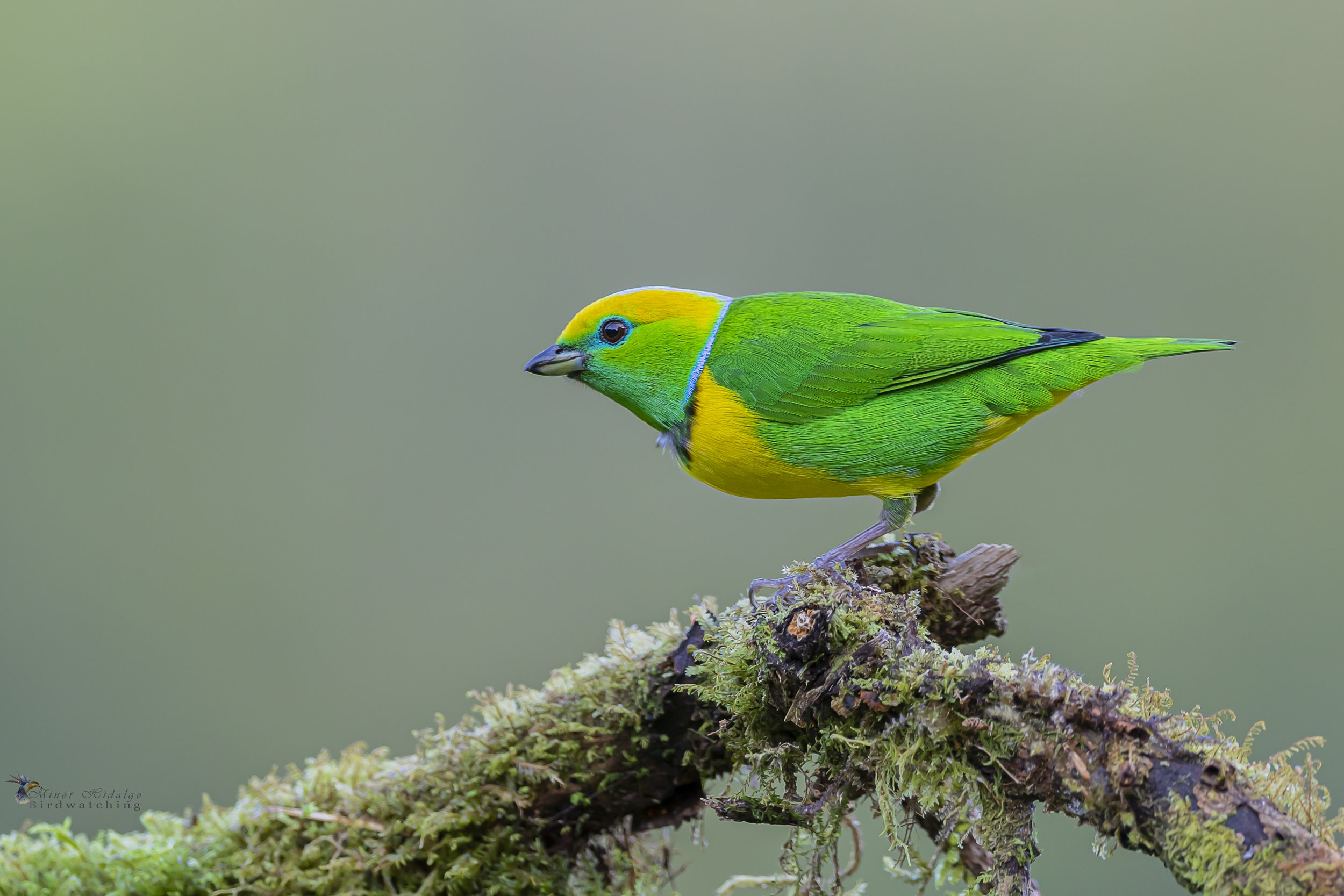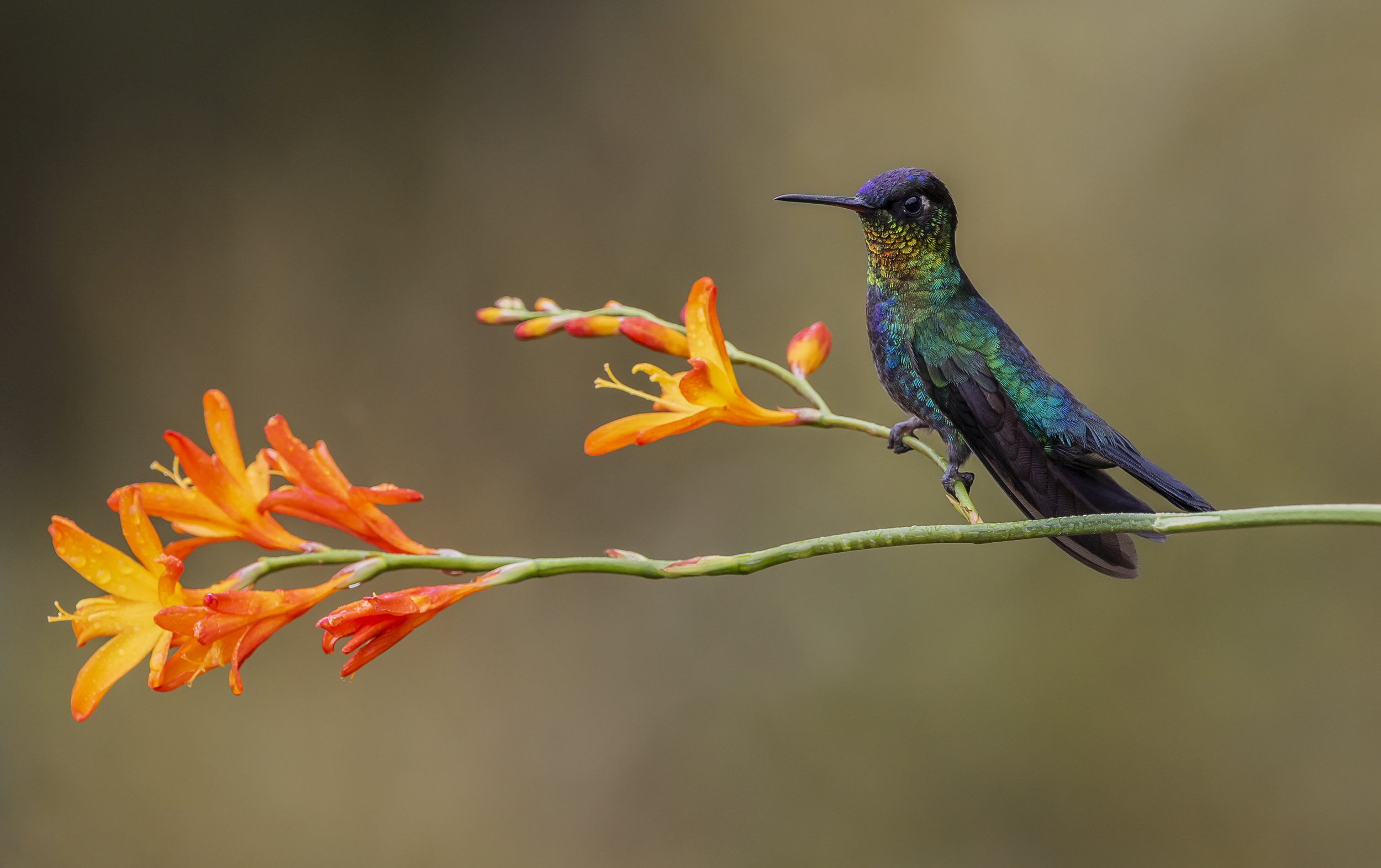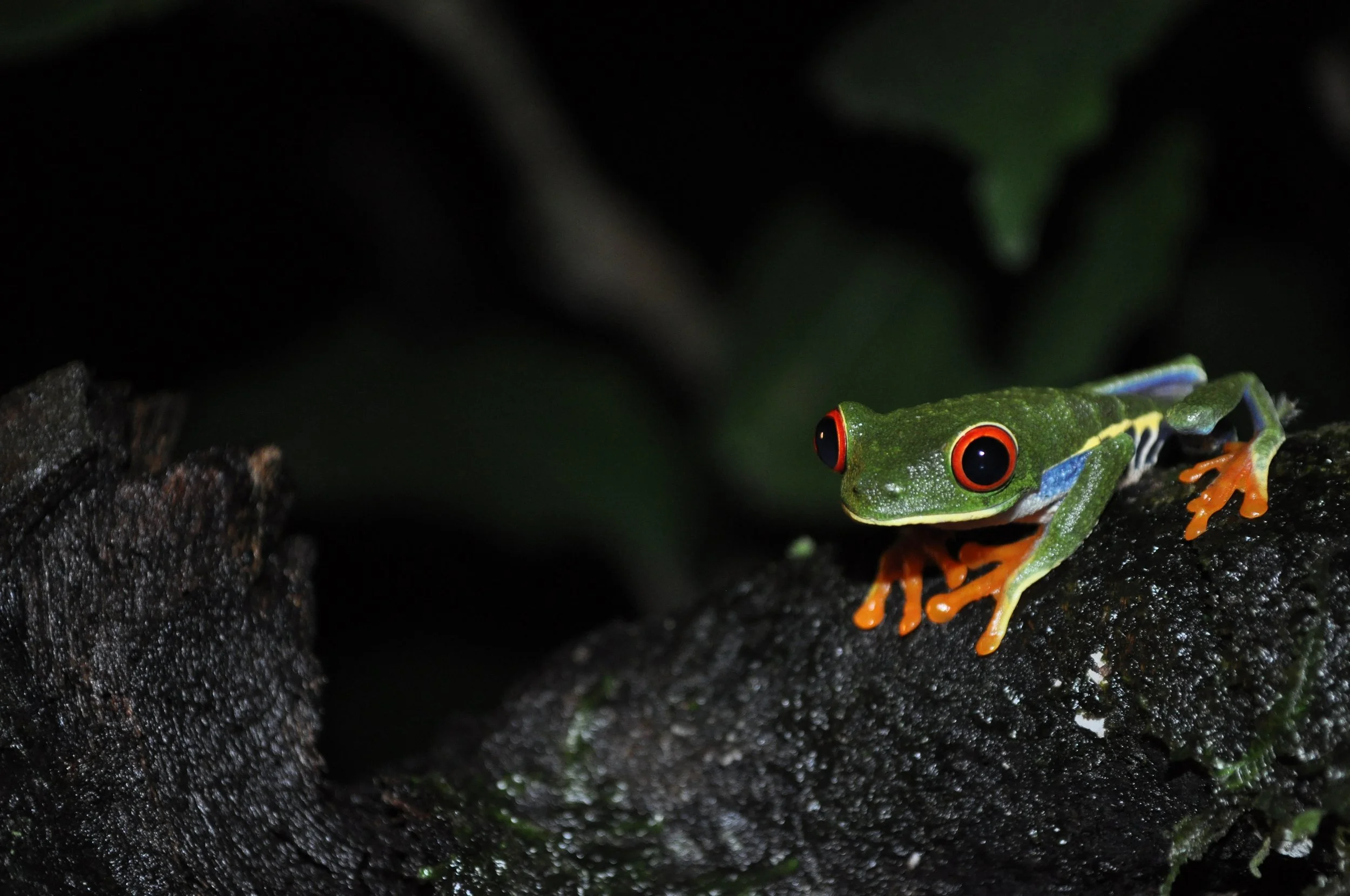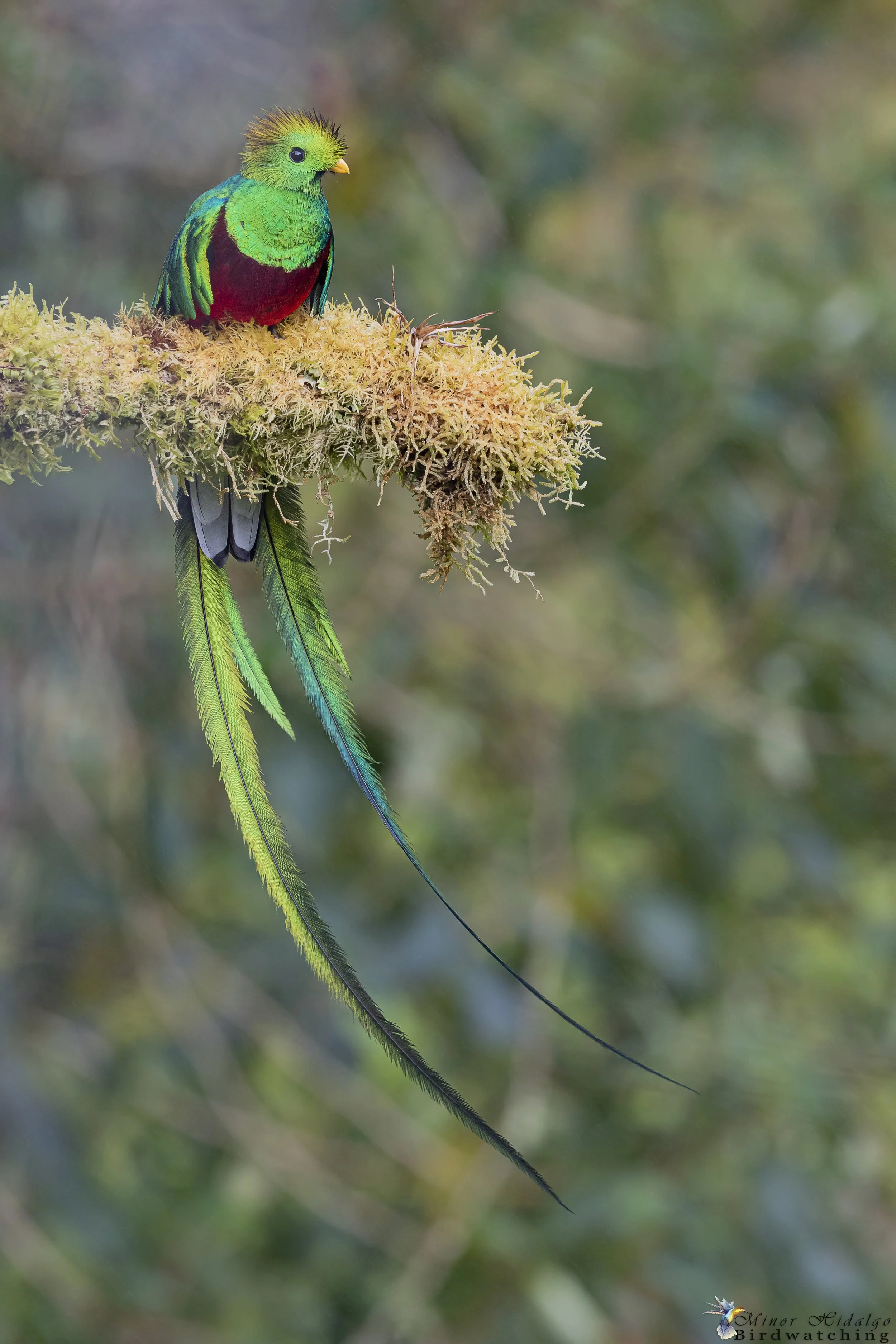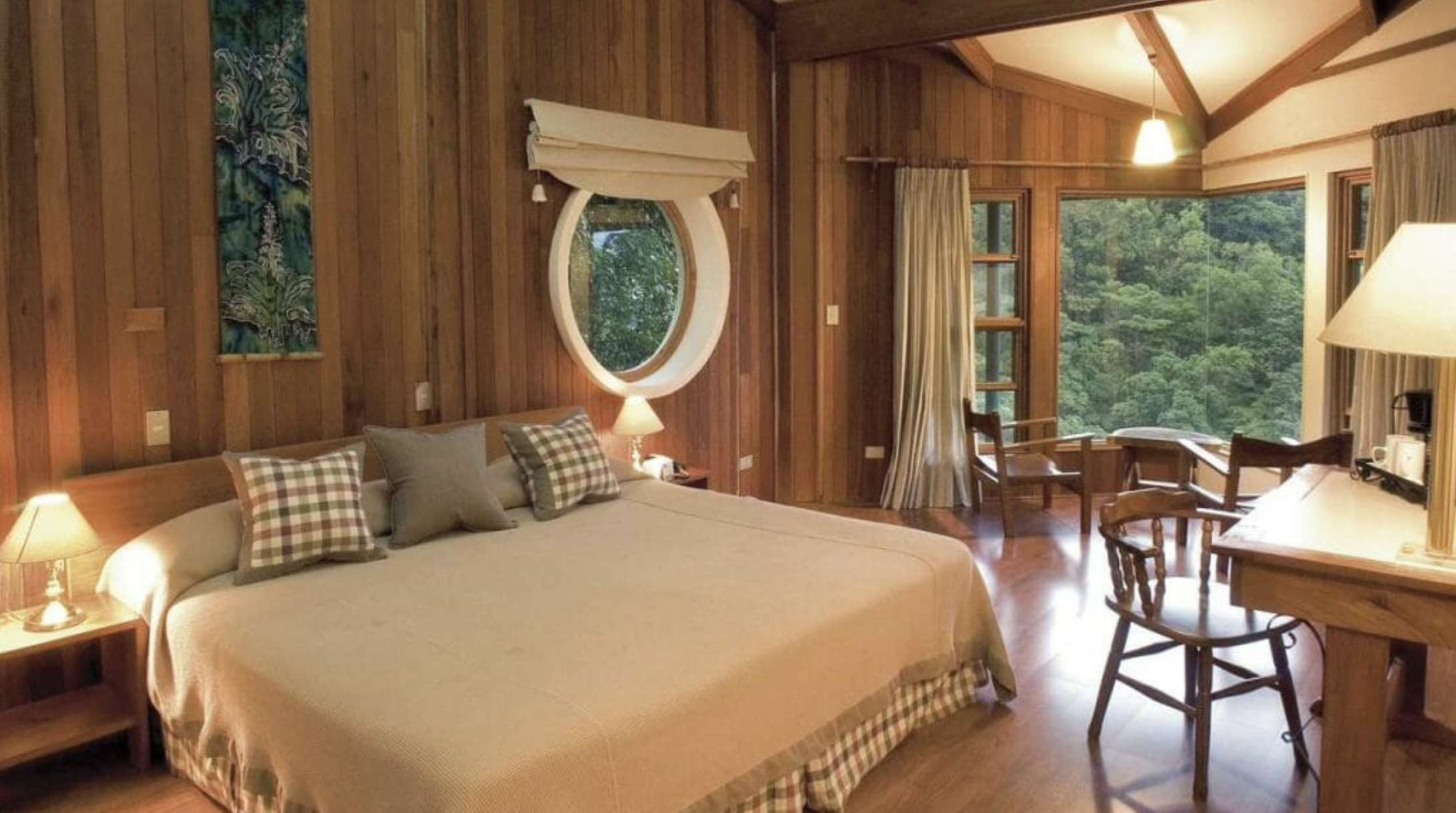Costa Rica: 11-Day Birding Experience
2024 | 2025 Experiences: Custom dates available
Explore one of the most pristine and diverse ecosystems on earth. Lead by expert local naturalists and some of the top birding guides in Costa Rica, you'll learn about many of the country’s more than 800 avian species, adding several to your birding life list. Gain insight into sustainability measures being taken that make Costa Rica an example for the rest of the world to follow.
Highlights
Travel in comfort with a small or private group, lead by our local expert birding guides in some of Costa Rica’s most ecologically diverse regions.
Relax in natural hot springs, soak in the sights and natural sounds around the majestic Arenal Volcano National Park.
With over 800 species of birds, your trip to Costa Rica will disappoint. Add to your birding Life List while exploring the cloud forests of Monteverde and tropical lowland rainforests around Sarapiqui.
Itinerary
Arrival Day: ¡Bienvenidos a Costa Rica!
Arrive into San Jose airport. Your team will meet you at the airport and escort you to your hotel to check-in. Join your group for your first local dinner and an introduction to local culture. Bienvenidos!
If there is still some daylight, we can check for some species of birds from the Central Valley in the gardens.
Lodging: SJO - Bugambilia Hotel or similar
Day Two: Bird spotting in Savegre
Enjoy a traditional healthy Costa Rican breakfast and start our drive to Savegre. On our way, we will visit the Antenas del Cerro de la Muerte, the highest part of the mountain nd Pan American Highway, where we will start our spotting trip.
Our main target here is the Volcano Junco and Timberland Wren, just one chance for these two birds.
Lodging: Savegre Hotel or similar
Day Three: Savegre Hotel Reservation
Today, we will get up early in the morning to visit the hotel reservation and explore the beautiful landscape that this region has to offer and discover the beautiful species from the high elevations such as the Spotted Wood Quails, Spot Crowned Woodcreeper, the Long Tailed Silky Flycatcher, and the majestic Resplendent Quetzal. At the end of the day, we will finish by tasting some hot coffee and, if lucky, seeing the fog in a beautiful view.
Lodging: Savegre Hotel or similar
Day Four: From the Mountains to the Beach
We will make our way to the South Pacific coast and compare the different vegetation and fauna along the way. After spending a couple of days in the highlands of Costa Rica, and enjoying the “cold”, it is time to warm up and feel the rainforest weather. Once there, we will start exploring the new location and preparing for some beach time.
Lodging: Villa Lapas or similar
Day Five: Carara National Park and Boat Tour
We will visit the Carara National Park. According to the native culture, Carara means River of Crocodiles and that is because of the famous Tarcoles river, where hundreds of people stop to take pictures of the Crocodiles. In the afternoon we will go on a boat tour and explore what the Central Pacific has to offer. If lucky, you will hear the loud sound of the Scarlet macaw (Lapa Roja) flying above and enjoy the sunset of the Pacific coast.
Lodging: Villa Lapas or similar
Day Six: Cloud forest
We leave the beach to explore another microclimate and weather of Costa Rica; the cloud forest. We will visit the famous Curicancha reservation, well known for spotting different animals, and home of the majestic Three-wattled Bellbird. There, we will have another chance to see the Resplendent Quetzal. Monteverde is another place to have a good cup of coffee and a good meal and is home of the famous Monte Verde ice cream.
Lodging: Monte Verde Lodge or similar
Day Seven: Rainforest
Today we will visit the MonteVerde Reservation and walk through the beautiful trails. It is a must to stop at the Continental Division, where the Pacific meets the Caribbean, and then start our drive to the La Fortuna area, home of the Arenal Volcano.
Lodging: Observatory Lodge or similar
Day Eight: Natural Hot Springs
We will continue our search for Costa Rica’s wildlife and take a break to relax and recover energy in the evening. The best place to do it is at the natural hot springs of La Fortuna. After a relaxed evening, it is time to go to bed and sleep like a baby.
Lodging: Observatory Lodge or similar
Day Nine: Last day in Fortuna
Enjoy your last day in the La Fortuna Area. We will have time to taste a good meal, relax in the hot springs, and enjoy the views of the impressive Arenal Volcano, but our journey needs to move on, and it is time to transfer to the next destination.
Lodging: Observatory Lodge or similar
Day Ten: Sarapiqui visit
We will head to Sarapiqui, the last must-go spot for birding in Costa Rica. On the way there we will visit a humble restaurant in Cinchona where we will see many hummingbirds and probably the Northern Emerald Toucanet. The Caribbean side of Costa Rica is one of the most biodiverse places in the country.
Lodging: Selva Verde or similar
Day Eleven: Back to San Jose
Today, we will visit the La Selva Biological Station, which belongs to the Organization of Tropical Studies (OET) which houses hundreds of species of animals, and produces hundreds of scientific investigations per year. We will spend the day there before making our way back to San Jose for our last dinner.
Lodging: San Jose Hotel
Day Twelve: ¡Buen Viaje!
Your beloved leaders will escort your group to the airport in private transport. We hope you enjoyed your stay in Costa Rica, gained insight and knowledge into local conservation efforts, added greatly to your birding life list, and collected good memories during your time traveling with us.
Accommodation
Accommodation on this experience will be a mix of boutique hotels and cozy guest houses
Packing List
Checked luggage should be a duffle bag (rolling duffels are fine). Large square suitcases are sometimes difficult to maneuver through the crowded spaces and may not fit well in the back of our vans. Packing the right gear (and the right amounts) is the first step to an incredible travel experience. Follow these tips to pack like a pro:
Travel light. Pack only the essentials. You’ll need less than you think!
Bring the right clothes. Pack clothes that are culturally appropriate for your destination (short shorts or clothing that reveals shoulders is generally frowned upon)
Leave your valuables behind. While traveling, it is easier for things to get lost, stolen or damaged. Keep your prized possessions at home.
Check with TSA. Make sure your luggage complies with TSA regulations, especially your carry on. Useful tip: Pack an empty reusable water bottle (Nalgene or similar) and fill it up after security.
Carry-on Luggage
A small backpack makes a great carry-on bag—it can double as a day-pack once you arrive
Passport and wallet (travel wallet that can be hidden under clothing is a good idea)
Photocopy of passport (2 additional photocopies should be carried in checked luggage)
Make sure that your passport is valid for at least six months from your date of departure and has plenty of empty pages.
Sunglasses
Journal and pens
One change of clothes (optional)
Refillable Water bottle (Nalgene or similar)
Medications
Immunization Records/COVID-19 documentation
Camera, extra batteries and memory cards
Checked Luggage
Socks (enough for each day of travel 1 or 2 being long socks)
Underwear (enough for each day of travel)
Thermal Base layer (1 set optional)
Pants/capris/leggings (2)
Shorts (1 or 2)
Jeans (1 or 2)
T-shirts (3-5)
Long sleeved shirts (2 o r 3)
Raincoat
Soft Shell jacket/micro puff jacket
Fleece/hoodie
Sneakers/hiking boots (be sure they are already broken in to avoid blisters!)
Sunglasses and sun hat
Quick-dry towel
Toiletries (travel sized and in ziplock bags)
Be sure to pack sunscreen, bug spray, feminine hygiene products and if bringing medications, be sure to bring enough for the duration of travel.
Foam earplugs, personal medkit, hand sanitizer and wet wipes are also recommended.
Note: Laundry service may not be available in every location.
What's Included
What's Included
All scheduled transportation
All activities as detailed in itinerary
Bottled water for your refillable bottle
All scheduled meals
A local expert birding guide with you throughout the trip
Local support team on call 24/7
Contribution to local organizations and/or projects
What's Not Included
Travel Insurance
International flights, visa fees and COVID-19 testing
Alcoholic beverages and soft drinks
Personal expenses (phone, laundry, cabs, etc.)
Optional or added activities not mentioned in itinerary
Tips to hotel, lodge staff
Gratuity for trip guide(s)
Map
FAQ
Do I need a passport to travel to Costa Rica?
You must have a passport to travel internationally. When you book your trip with Off Cape Experiences, we ask that you submit a copy of your passport in part to verify whether it’ll be valid when you travel. To travel, your passport must be valid for at least six months after you return from your trip and has at least one (and probably more) empty pages.
Renewing a passport can take four months so if it doesn’t meet the above criteria, start the process immediately.
Learn more about how to renew an existing passport.
Learn more about how to expedite your passport renewal.
Learn more about how to apply for a first-time passport.
Make copies of your passport and keep one in a safe place not with your passport. This will come in very handy if you misplace it and need to get a new one.
Do I need a visa to travel to Costa Rica?
Visas aren’t required for U.S, Canadian or EU citizens visiting Costa Rica for less than 90 days. Learn more by visiting the U.S. State Department website.
Travelers from outside the U.S. with other passports should review entry requirements for your home country, or get in touch and we’ll help you navigate this process.
What vaccines are required for travel to Costa Rica?
None if traveling from the U.S. However, we recommend reviewing the CDC Traveler’s Health page for Costa Rica, which recommends a number of vaccines, including childhood vaccines, COVID-19, Hepatitis A and B and Typhoid. Please be sure to consult your doctor to decide what medicine and vaccines are right for you.
In addition to vaccines, if you take prescriptions, please bring enough for the duration of your trip. Obtaining your prescriptions in Costa Rica may not be possible. Some other prescription tips:
Pack your prescriptions in their original, labeled containers. We suggest you pack them in your carry-on bag.
Be sure to bring enough contact solution and personal hygiene products for the duration of your trip. Ear plugs are also a good idea to have on your flight.
A personal First Aid kit is always a good idea to have on you when traveling abroad.
Is the tap water safe to drink?
Water from the tap is generally safe to use for brushing teeth etc, but participants will be provided as much bottled water as they can drink. Bringing a Nalgene or similar 1 Liter refillable bottle is highly recommended and promotes sustainable travel and respect for the places we are traveling.
In addition, routine hand washing before and after meals and after using the bathroom will cut down on your chances of getting sick. Although delicious and a great way to experience local culture, eating street food can also increase your chance of getting sick.
What will the food be like? What kind of dietary requirements/food allergies can you accommodate?
Travelers will eat a combination of local Costa RIcan dishes and more western-style dishes. Breakfasts typically include cereal, breads, eggs, oatmeal, and fresh fruit. Lunches and dinners range from traditional Costa Rican food – rice and beans, chicken, seafood, plantains, fresh fruit and salad – to pastas, barbeques etc.
Dietary Requirements/Food Allergies – We can easily accommodate vegetarian, vegan, gluten-free, and other common dietary requirements. Please make sure to let us know if you have any food allergies or dietary restrictions. Keep in mind that the variety of foods available for some dietary preferences may become a little repetitive on longer trips.
Is it safe where we’re going in Costa Rica?
Costa Rica is generally a safe place to travel. However, using common sense is a must. You will be briefed upon arrival at each location. Listen to briefings from your guides and ask questions! Do not assume.
We highly suggest limiting alcohol intake and being out late at night, especially alone.
What happens if I need medical care while in country?
Our staff will take you to the clinic or hospital that has been previously vetted in the area. Off Cape Experiences requires that all participants acquire comprehensive traveler's insurance, which should include coverages for medical and evacuation costs, personal property and trip interruption expenses.
Do I need to bring cash? How much?
It’s always a good idea to bring some US dollars as spending money. ATM cards with Plus or Cirrus network (or both, so with standard debit cards like Mastercard or Visa you should be fine). Beware of fees your bank may charge you though for international withdrawals. Contact your bank beforehand as banks often freeze the account when used abroad. We can help you exchange dollars for colones.
Some additional info about cash and money:
ATMs are widely available in towns and tourist areas. They usually offer decent exchange rates, even when including fees from your bank.
Travelers Checks are not recommended as you will receive a lower rate of exchange and additional fees to use them.
Bargaining is acceptable in many places such as street vendors, when buying souvenirs in Costa Rica. Stores, not as much. How much you want to push it is up to you. Ask yourself what you would pay for that item at home, compare the price and find somewhere in the middle that is reasonable for both parties. Remember to keep a smile on your face and always be polite. It’s a good thing when both sides of the deal are happy.
Is tipping expected in Costa Rica?
Yes. You’ll be expected to tip your guides and service staff you interact with while traveling in Costa Rica. How much to tip is up to you, but please use the following as a guide:
Whenever you are unsure, ask a local or your guide. As a general rule, expect to tip around 10% of the bill. If you get exceptionally good service, say thank you with a tip closer to 15-20%. Whether you're tipping with cash or card, always use the local currency to save money.
Should I bring my expensive digital camera?
If you want to capture images your phone can not capture, then yes. Cameras are or can be an important piece of equipment while traveling. As for what type of camera or lens to bring, it’s entirely up to you. Whichever camera you decide to bring, be sure to become familiar and comfortable using it before departing for your adventure and keep in mind that it will be your responsibility to look after and carry.
Photo etiquette is very important. The etiquette of photographing most people is about the same as it would be on the streets of your hometown. In general, you need permission to take a close-up, as you would at home, but not for a crowd scene. Be especially polite if you want to photograph people. If you want to shoot a portrait, show interest in your subject, and try to have a bit of interaction first. Then use sign language to inquire if a picture is OK. Your driver-guides can help.
Will my phone work in Costa Rica?
Short answer, probably, if you pay for it. Check with your provider for roaming rates and international data packages before traveling. These rates can pile up very quickly and be extremely expensive.
If you have a travel phone or a phone with a slot for an extra SIM card, you can buy a local SIM card with data for the duration of your stay. This usually ends up being the cheapest option, though not always the most convenient.
Do I need a power adapter to charge my devices?
American electronics generally do NOT need any adaptors. In some places outlets might be two pronged instead of three. So you might want to pick up a three prong adaptor on Amazon or your local hardware store before traveling. That being said, most places have standard three prongs, same as the U.S.
How will we get around in Costa Rica?
We work with a local transportation company that has a private fleet of vehicles for you to travel comfortably as we move about the country.
$ Price Determined by # of travelers + international airfare
Pricing is per person, based on double occupancy for a group of at least 6 people. An additional charge is applied for single occupancy. A 20% deposit is required to book travel. The balance is due 90 days prior to departure, or immediately if booked within that time period. Special rates may be available for group bookings. Questions? Fill out this form.

